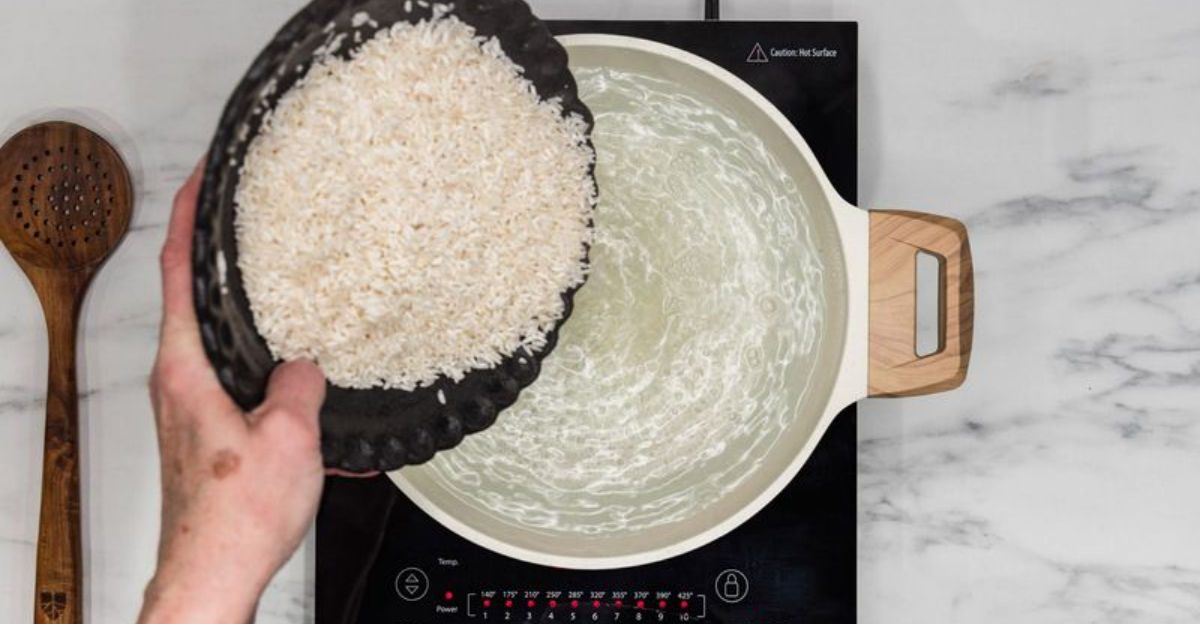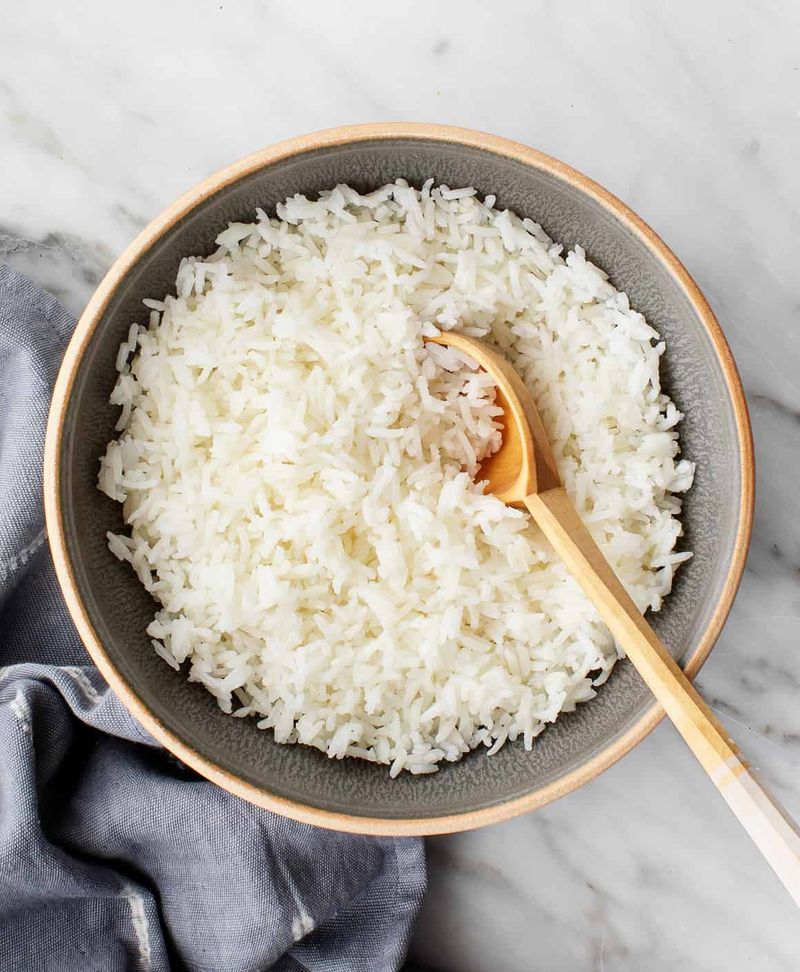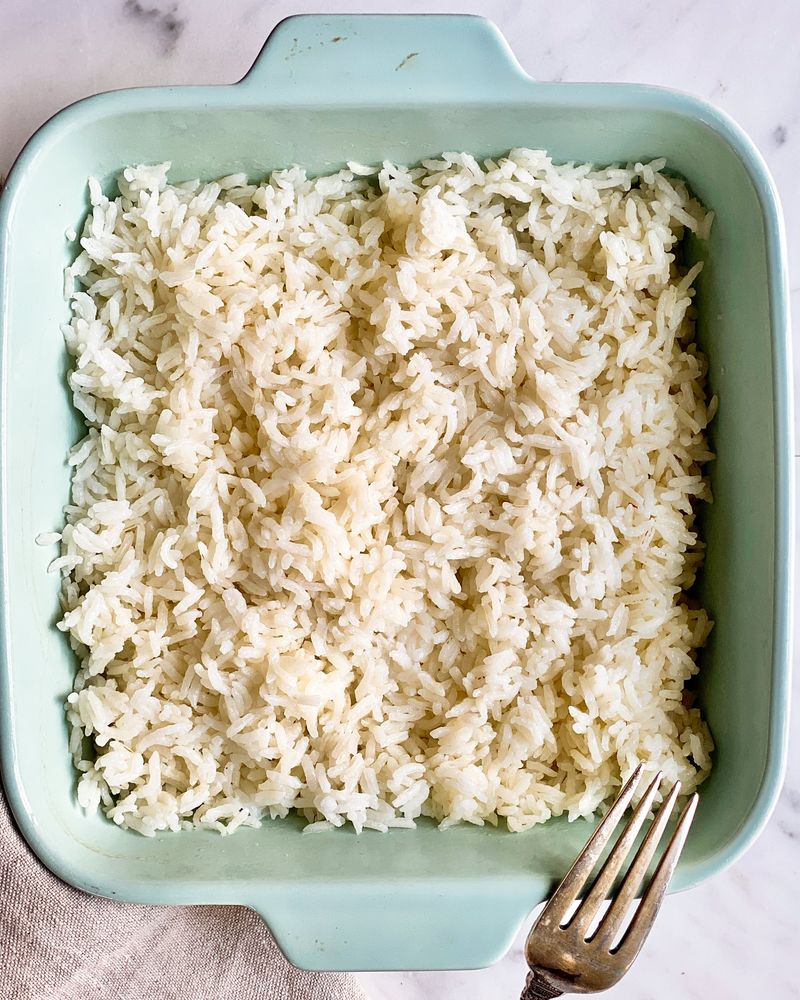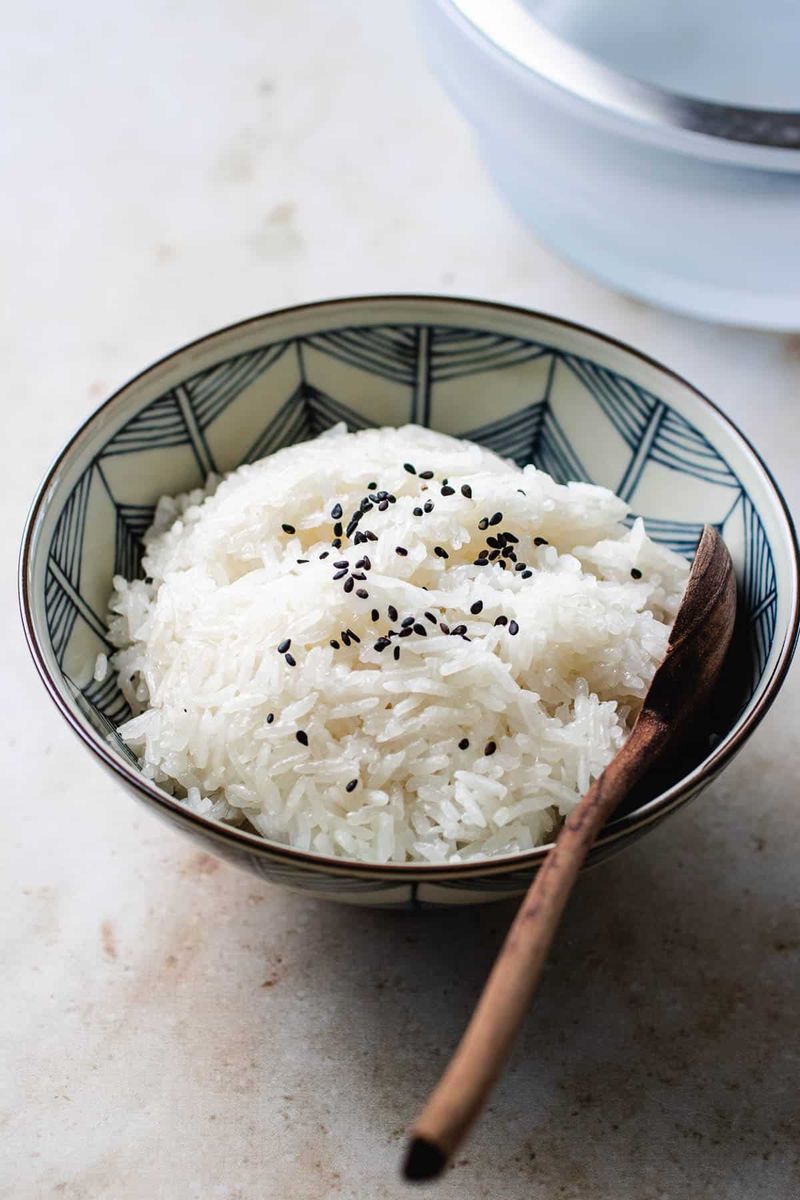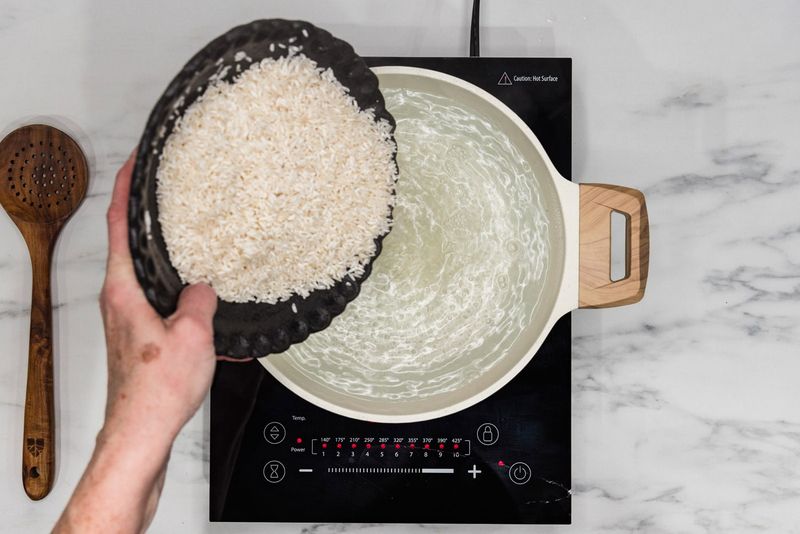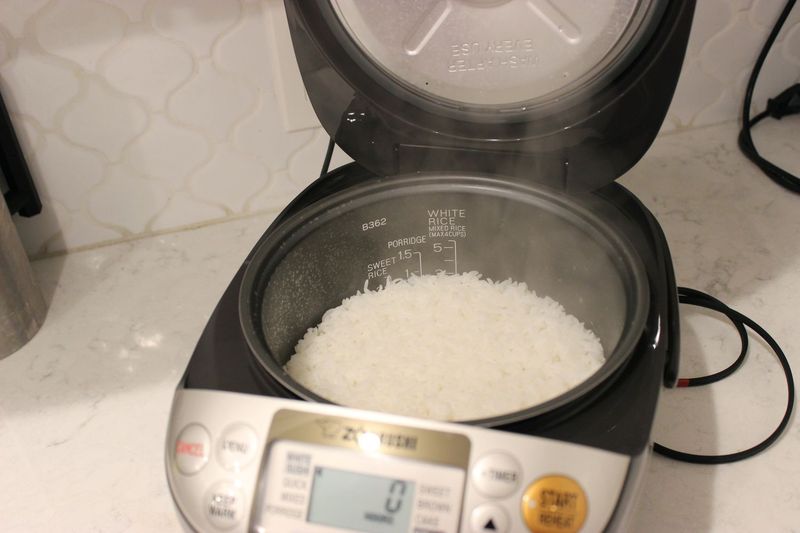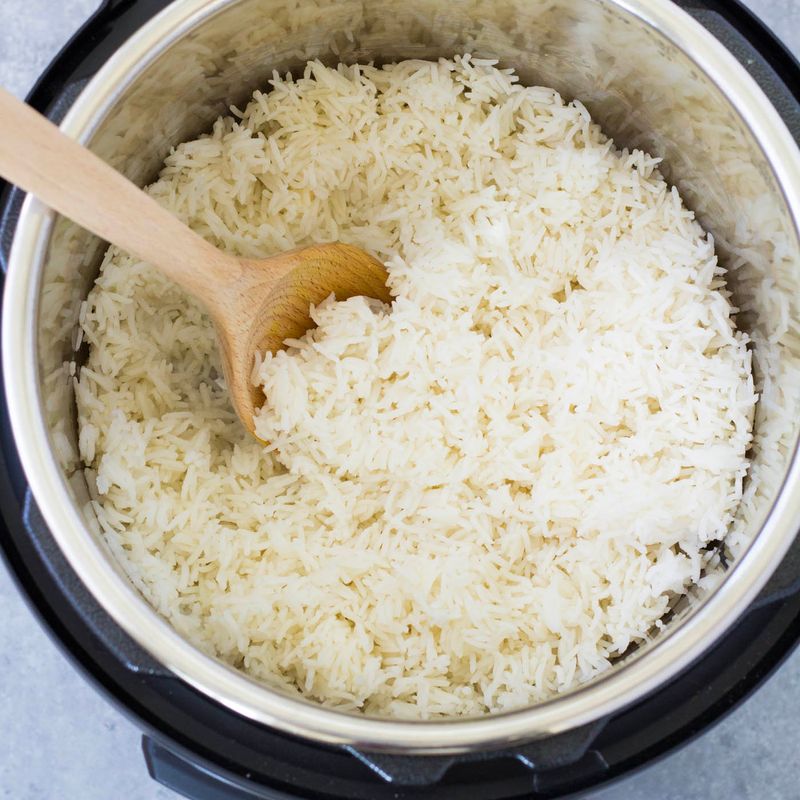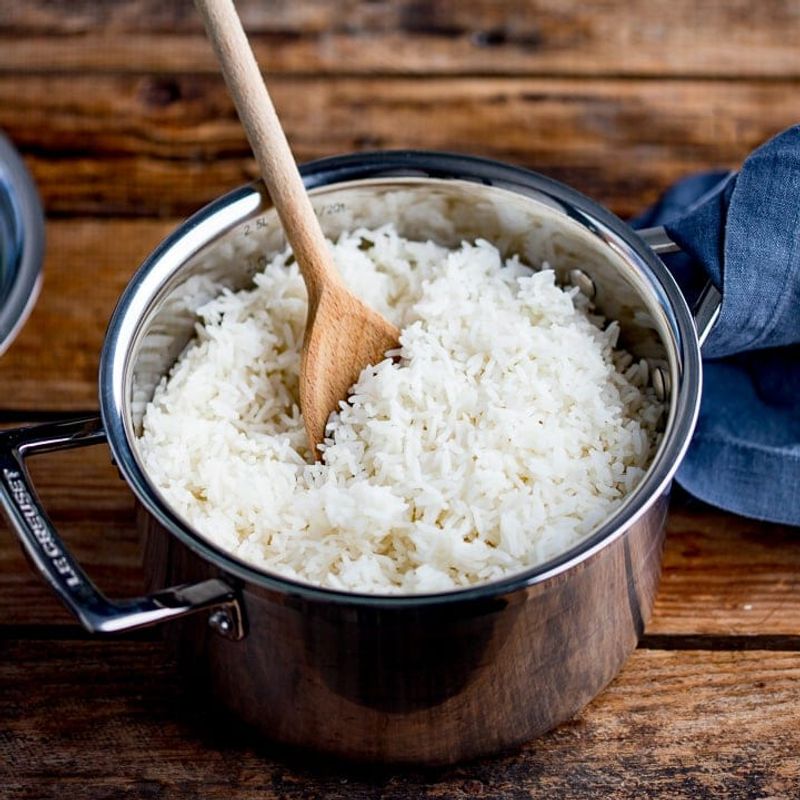Making perfect rice sounds simple, but anyone who has ended up with a mushy or sticky pot knows it can be tricky. We tested seven popular cooking methods to see which ones actually deliver that light, fluffy texture everyone loves. Surprisingly, only two techniques gave us consistently great results, while the others fell short in different ways.
1. Traditional Stovetop Method (Winner!)
This classic approach earned top marks for good reason. Rinsing your rice first removes excess starch that causes clumping. Then you bring water to a boil, add the rice, reduce heat to low, and cover tightly.
After about 18 minutes, all the water gets absorbed and the grains turn tender. The secret lies in letting it rest off the heat for 10 minutes before fluffing with a fork.
Most home cooks already have everything needed for this method. The rice comes out separate, light, and perfectly fluffy every single time when you follow the steps carefully.
2. Oven-Baked Method (Winner!)
Baking rice in the oven might sound unusual, but it works beautifully. Combine your rice with boiling water in a baking dish, cover it tightly with foil, and slide it into a 375-degree oven.
The even heat surrounds the dish from all sides, cooking the grains uniformly. This hands-off technique shines when you are preparing large batches for gatherings or need your stovetop free for other dishes.
After 25 to 30 minutes, you will find perfectly fluffy rice waiting for you. The consistent temperature prevents burning on the bottom, which sometimes happens with stovetop cooking.
3. Microwave Method
Quick and convenient, the microwave seems like an ideal solution for busy weeknights. You combine rice and water in a microwave-safe bowl, cover it loosely, and cook on high for about 10 minutes.
Unfortunately, the results disappointed us. Microwaves heat unevenly, creating hot spots that overcook some grains while leaving others underdone. The texture turned out mushy in places and hard in others.
Even adjusting power levels and cooking times could not fix the inconsistency. While this method saves time, the quality just does not match traditional techniques for achieving that coveted fluffy texture.
4. Pasta Method (Boil and Drain)
Treating rice like pasta sounds logical enough. Boil a large pot of water, add rice, cook until tender, then drain in a colander.
The problem is that rice releases lots of starch into the cooking water. When you drain it, the grains become waterlogged and lose their structure. Our batch came out soggy and clumped together in unappealing lumps.
The texture felt heavy rather than light and fluffy. Plus, you waste all that starchy cooking liquid. Some cultures use variations of this technique successfully, but for everyday fluffy rice, it simply does not deliver the results most people expect from properly cooked grains.
5. Rice Cooker Method
Rice cookers promise foolproof results with the push of a button. We expected this gadget to nail fluffy rice automatically.
Surprisingly, our test produced mediocre results. The rice came out edible but slightly sticky and compressed at the bottom. Different models vary widely in quality, and cheaper versions often lack proper temperature controls.
The rice at the top layer was acceptable, but the bottom turned mushy and dense. While rice cookers work well for certain rice types like sushi rice that should be sticky, they did not give us the separate, fluffy grains we wanted for this comparison.
6. Instant Pot Pressure Cooker
Pressure cooking has become incredibly popular for speedy meal prep. We tested rice using the Instant Pot on its rice setting, hoping for quick and fluffy results.
The high pressure and steam environment cooked the rice fast, but the texture suffered. Our batch turned out dense and sticky, with grains that clumped together rather than staying separate.
Pressure traps moisture inside, which makes rice more compact instead of light. The natural release time added extra moisture that worked against fluffiness. While convenient for some dishes, this method does not produce the airy texture that defines perfectly cooked rice.
7. Absorption Method with Cold Water Start
Some recipes suggest starting rice in cold water and bringing everything to a boil together. The idea is that gradual heating cooks the grains more evenly from the inside out.
In reality, this extended cooking time made our rice mushy. The grains absorbed too much water before the temperature rose high enough to set their structure.
By the time the pot reached a simmer, the outer layers had already broken down. The final product was soft and sticky rather than fluffy. Starting with boiling water works better because it seals the grain exterior quickly, allowing steam to finish cooking the inside properly.
